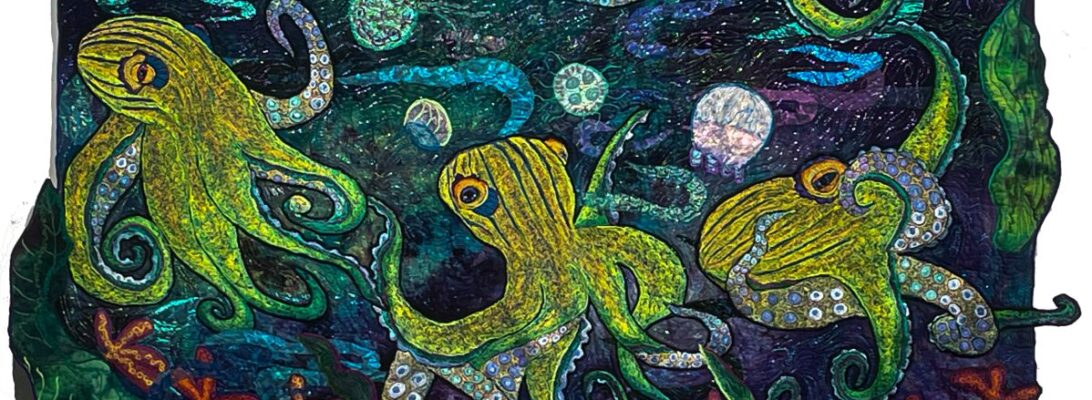
Anatomy of a Color Scheme
There’s no help for it. If you are shading a pink bird, you’ll need to use pastels at some point. I’m not a fan. But you don’t get to throw out a section on the color wheel. Eventually, you’ll need all the values: tones, jewels, and pastels. Tones and jewels. Yes! Pastels. not that much.
Let me break down the color scheme for you.
There are six color zones, in the feathers of this bird, and then a zone for the neck and thighs, the feet, the head and the bill.




There are two progressive color themes going on. The pink under body and feathers, and the green overstitching. Both progress from dark to light.

Where did it go wrong? I chose the wrong yellow.


White objects are rarely pure white, unless you want a posterized deco look. They’re made up of other colors pale enough to be perceived as white. The bird itself is pink. I pulled in bits of lavender and yellow to blend it and to create a shadowed projection. I chose the wrong yellow. If you look at the top feather, you can see a strip of yellow that’s pretty loud.
You know that kind of Easterbunny pastel. Yellow, pink, blue, purple, and maybe green. It’s only appealing if you’re under the age of five. It missed here. I stitched some cream and natural white thread all over it.

Then I added the overstitching. The overstitching takes center stage, and the yellower bits back off. I think I’ve saved it. It also browns out the pinks a bit. They’re all there, but quieter for the green.
What should I have done? I should have lined up that yellow in a row with the other colors and taken a black and white picture of it. I would have known right there. But I’m happy with it now.

I’m ready for the next step, which is the background. And I think it needs yellow fish and birds.









































































